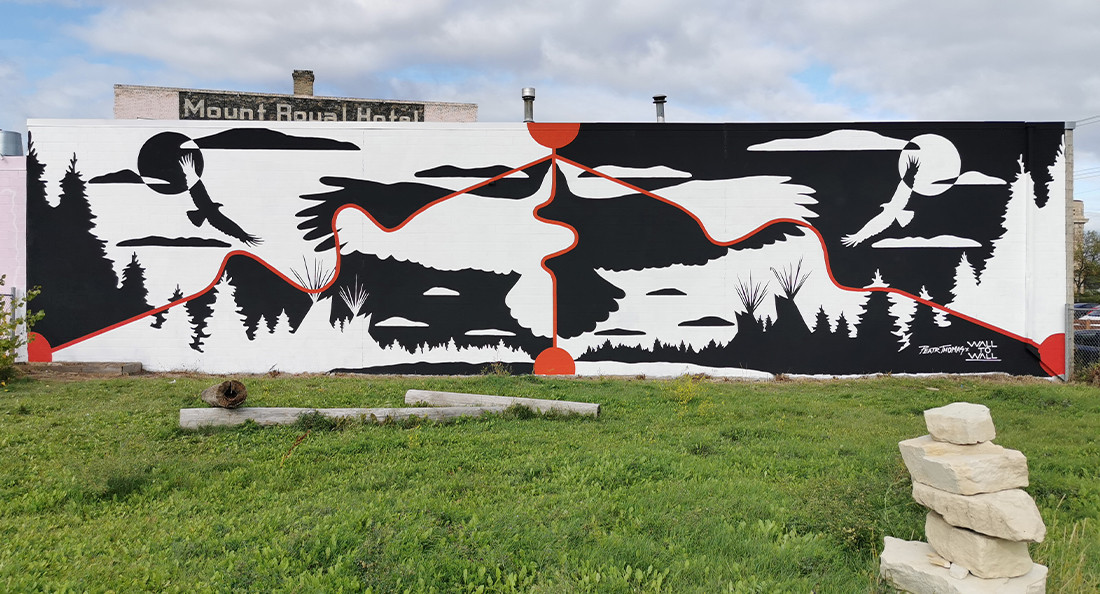Setting tones and stepping stones
Morrisseau’s work helped pave the way for Indigenous art recognition and growth
Urban Shaman Contemporary Aboriginal Art Gallery’s newest exhibit features original works from one of the most prominent Anishinaabe artists of his time and the creator of the Woodland School of Art, Norval Morrisseau.
Running until Oct. 30, Urban Shaman gallery director Daina Warren says this joint exhibition with the Buhler Gallery at St. Boniface Hospital came from Buhler’s curator Leona Herzog’s connection to Westerkirk Works of Art Incorporated in Toronto, featuring Morrisseau’s work.
Westerkirk “got into contact with Leona about a year-and-a-half ago, and after they approached her, Leona was definitely on board right away to take part of the touring show on,” Warren says.
Westerkirk has “145 pieces of Norval’s work, and on their current tour, they approached smaller art institutions, as well as various organizations, to see the reception and response to his work. So once Leona decided, she approached Urban Shaman to see how we could partner with them, and since there were so many pieces to choose from, we were both easily able to curate our own galleries out of that collection.”
Warren says this exhibit is a huge opportunity to showcase a well-known, respected artist and through its reception, it can represent the growth of Indigenous art reception and curiosity in Winnipeg, which has been Urban Shaman’s focus since its creation.
“The gallery was started in 1996 by a group of young artists who recently graduated from (the University of Manitoba’s School of Art), and it was created to provide a safe space for Indigenous artists to show their works,” she says.
“Initially, they found it challenging to apply to places and get curators to assist in what they were doing, so they created Urban Shaman, so that they can have a space to work out of.
“Nearly 25 years later, the space has become more well-known with a bigger reputation nationally and internationally, (and there) has been a more positive swing from where Urban Shaman started to where it is now.
“For Morrisseau’s exhibit, most of the feedback that I have been hearing has been really great responses already in the few days since the show has been up, and a lot of people, even non-Indigenous people, are coming out.”
Morrisseau continues to inspire artists today, and Swampy Cree/Ojibwe artist Peatr Thomas says he was exposed to Morrisseau’s work from an early age.
“I remember seeing his pieces when I was really young as prints in school,” he says.
“And as a young Indigenous person, in my mind, I have always thought that his work was the industry standard for art, moreso because I have seen other artists pick up inspiration from his work, and I still see that today.”
Thomas says Morrisseau’s work is important as a stepping stone in recognizing Indigenous art and for young Indigenous artists, and he continues to find inspiration in his work.
“The way he depicts the sun, there are often spirit lights connecting to other elements of his paintings, and I have definitely borrowed that in some of my works, as far as showing connection in a physical sense,” he says.
Urban Shaman is located at 203 - 290 McDermot Ave. For information on when and how to safely attend the gallery, visit urbanshaman.org.
Published in Volume 75, Number 03 of The Uniter (September 24, 2020)






